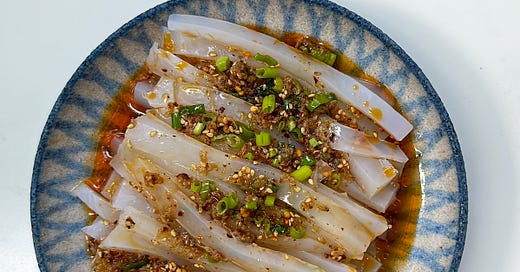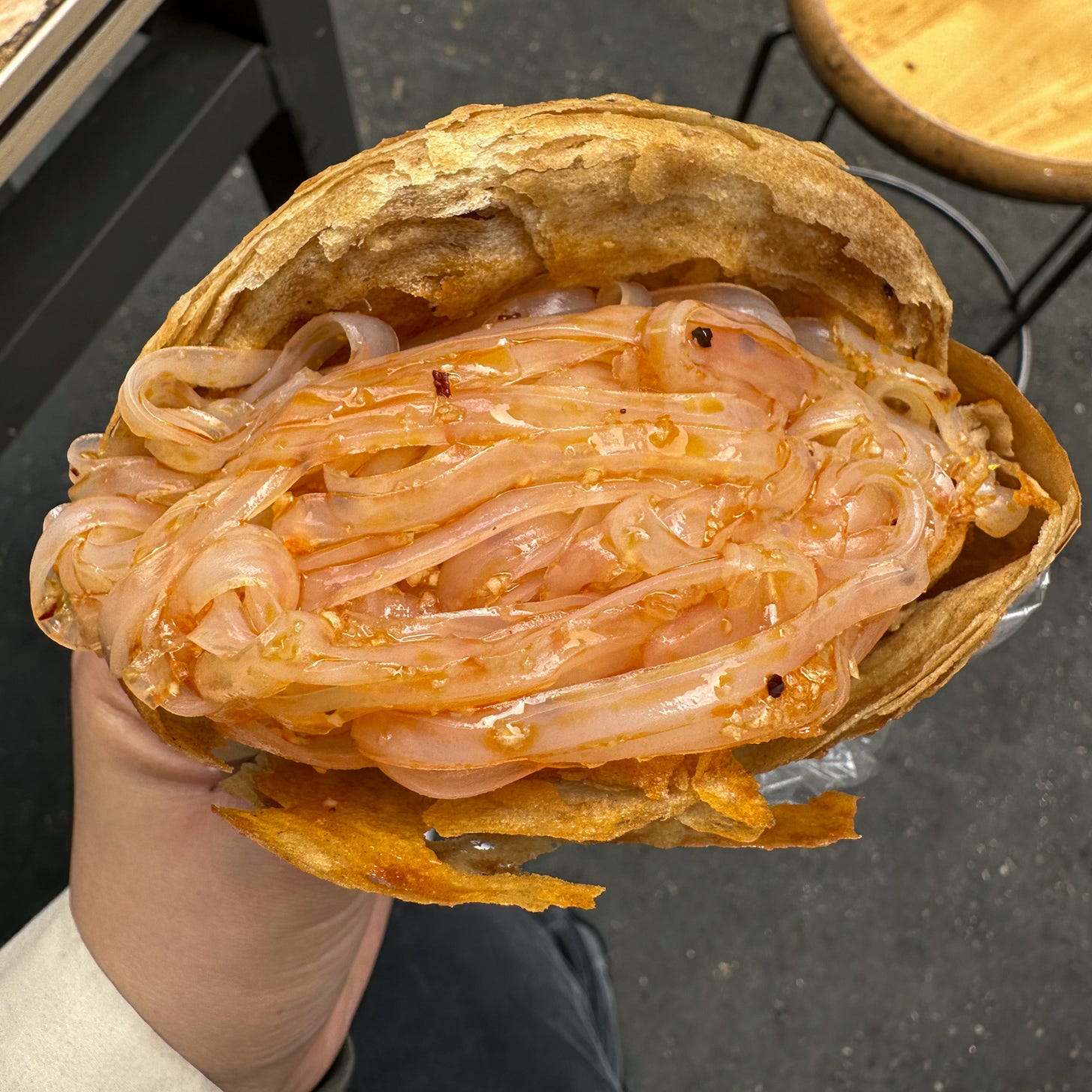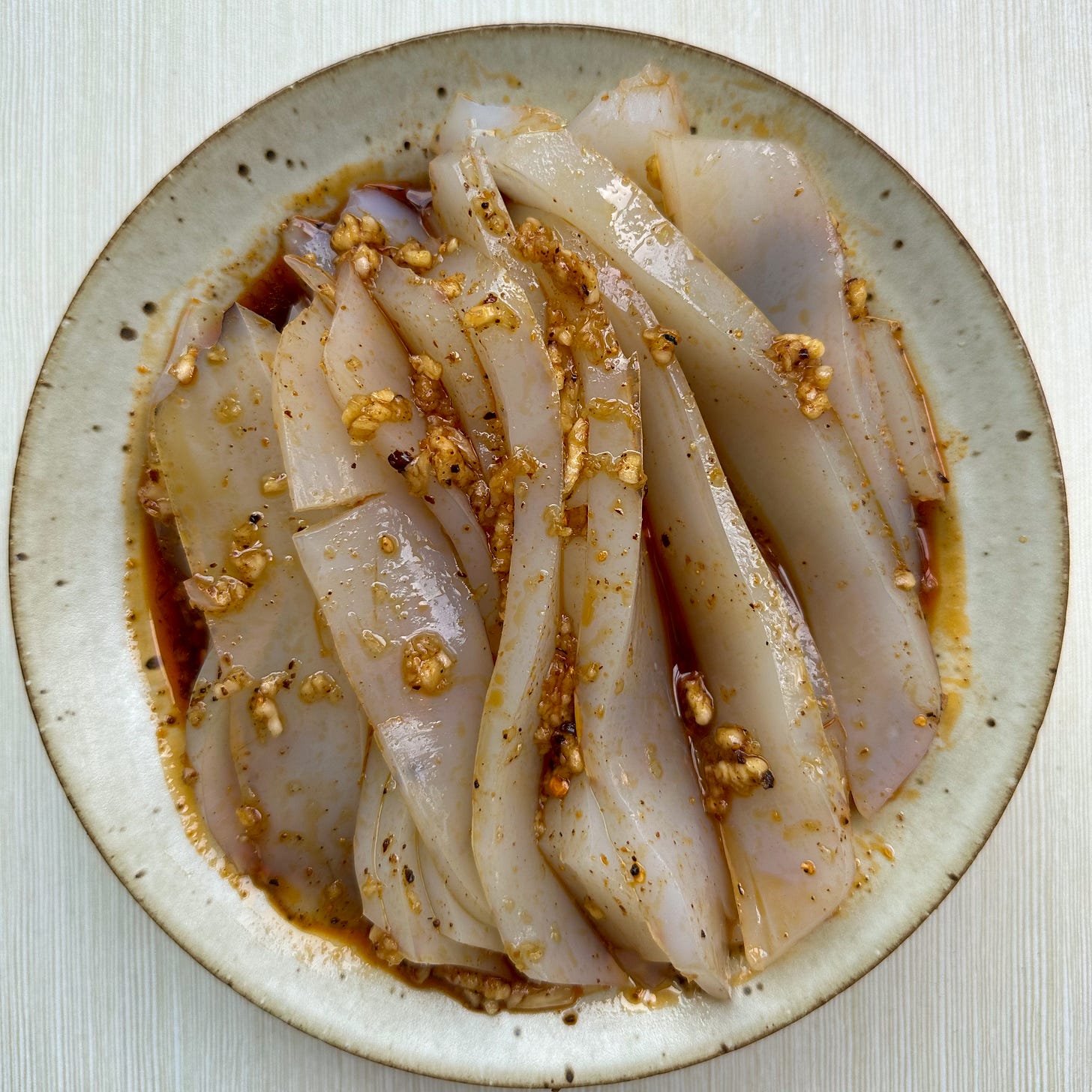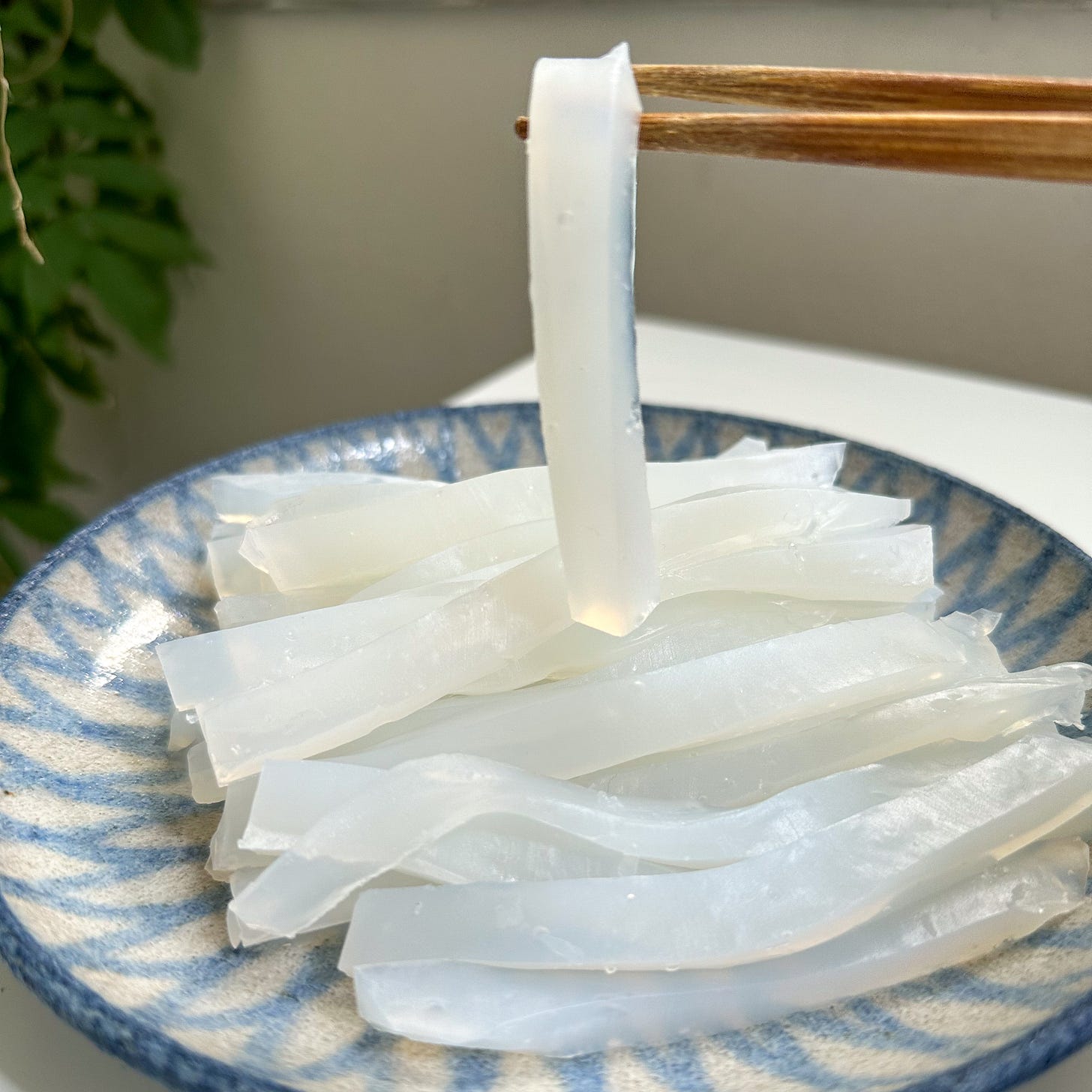hi! I’m back with another recipe after a weekend trip to Prague for my birthday. I dined at KRO kitchen, The Eatery, Lokal, Eska, and was happily home with a full belly.
This week we’re making liang fen.
(scroll down for the recipe and watch the video here!)
When I proposed to learn recipes from my grandma this April, liang fen was the first thing that came up. My parents insisted that I needed to learn how to mix liang fen before I left home again as if it were a survival skill. I then filmed my grandma and honed my craft back in Berlin, savoring them during the summer as told.
What is liang fen?
Liang fen (凉粉), also known as jelly noodles, are jade-like, slippery, cold noodles made of legume starch. Before being branded as a naturally vegan food, it has been consumed in China for centuries, first appeared in Song Dynasty’s “Dongjing Meng Hua Lu”, now beloved for its affordability and ease of preparation. In Sichuan, you’ll find versions made with yellow pea flour, or served with a fresh chili sauce, called tragically hot jelly (Shang Xin Liang fen, 伤心凉粉). What a great name. In other parts of China, these jiggly jelly noodles can be prepared with buckwheat, rice, or sweet potato (often served hot).
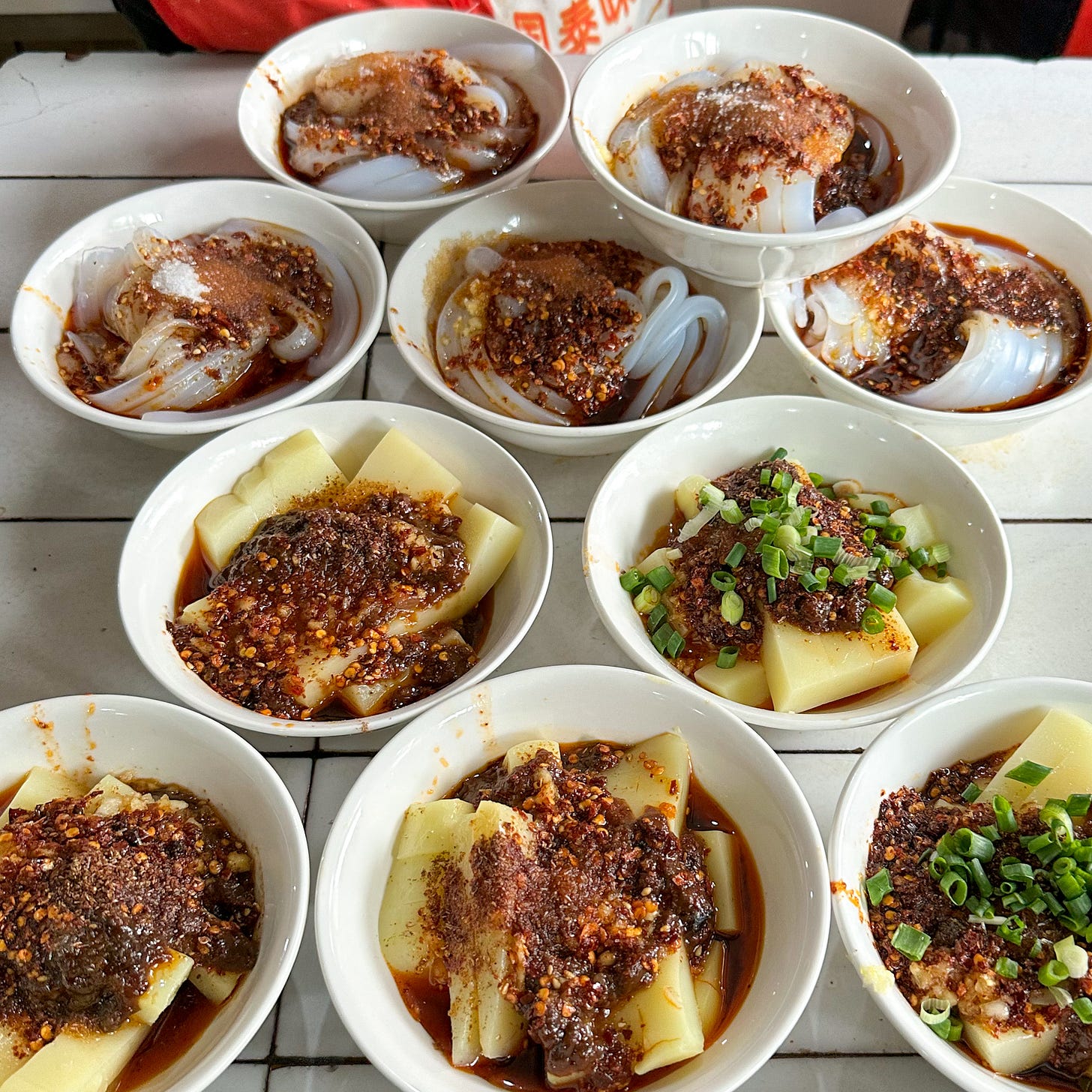
In my mom’s hometown Nan Chong (南充), this is known (and even trademarked) as “Northen Sichuan Liang Fen” (川北凉粉). Here pea-starch jelly noodles are thinly scraped, dripped in chili oil, and tucked in a laminated dough called Guo Kui (锅盔), enjoyed as a sandwich (similar to this). The contrast between the crispy and slippery textures was a dream every time we visited.
My paternal grandma’s version is close to this version. She insisted that pure pea starch is the best. To give me the recipe, for the first time, she ordered a scale and measuring cup instead of eyeballing it. Although this family recipe of the day went through a few more rounds of testing, of course with some adjustments.
The texture "problem"
Unlike hand-pulled noodles, the barrier to appreciating this dish lies in the texture, or the fact that texture is celebrated so differently across cultures. Liang fen doesn't have the al dente consistency you'd expect from noodles, but it's precisely the slippery and tender texture that makes it so popular. It’s not “to the teeth” but “melt in the mouth”.
On the other hand, the name “fen” can be confusing. 粉, cantonese fun as you recognise from chow fun, originally meant food made of rice or legume, later referred to the noodle made out of it. In Sichuan, they’re always served as small appetizers paired with other dishes rather than a substantial stand-alone meal. Liang fen itself only has a mild flavor, it picks up the sauce and gives it a refreshing touch when served with chili oil and garlic sauce, making it perfect for summer and a dish we enjoy all year round.
How to prepare liang fen
Both pea starch and mung bean starch (more available in Germany in almost every Asian store) work for this recipe; they have slight differences in consistency: the former is softer and tender, while the latter is more springy.
Ratio: Some use volume (1 part starch, 6 parts water); however, I find the weight ratio more accurate, ie. starch to water should be 1:9 for 1:10 depending on the desired texture. If you’re preparing this for the very first time, use 1:9 for a denser result for easy slicing.
Temperature: Let the starch cook over medium-low heat, and let the mixture cool completely at room temperature. If the dough is still warm, the strips can be easily broken. This dish is better served at room temperature as storing it in the fridge makes it rubbery.
Recipe
You can also serve it directly with the same sauce as in the smashed cucumber salad.
Ingredients (Serves 4):
for the jelly noodles
100 g pea or mung bean starch
1000 ml water
sauce for each serving
2 cloves garlic, minced
1 scallion, sliced
1 tbsp sesame seeds
1 tbsp chili flakes
1/2 tbsp sugar
1 tbsp Chinkiang vinegar
1/2 tsp sesame oil
2-3 tbsp water
MSG (optional)
ground Sichuan pepper (optional)
salt
2 tbsp vegetable oil
Serve with rice or guokui
Instructions
Mix pea starch with 200 ml water until dissolved. Bring 800 ml water to a simmer, add starch slurry slowly while whisking. Cook until nearly translucent and large bubbles appear. Transfer to a bowl to cool at room temperature. Use a scraper or knife to slice into thin strips and divide for 4 servings.
In a heatproof bowl, add garlic, scallion, sesame seeds, and chili flakes. Heat oil, and pour over mixture. When cooled, add vinegar, salt, sugar, MSG, and Sichuan pepper mixed with water. Spoon over jelly strips. If you’re serving in a bun, omit the water. Enjoy immediately.

